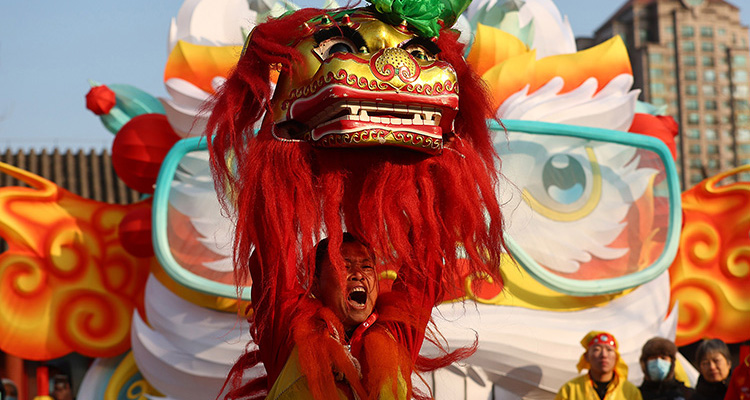Beijing Temple Fair – Experience China’s Vibrant Spring Festival Celebration
When the winter chill sweeps across Beijing’s grey-tiled rooftops, the city comes alive with festive warmth. Among all the Spring Festival celebrations, the Beijing Temple Fair stands out as the most authentic and vibrant experience. It’s not a typical sightseeing spot — it’s like a Spring Festival theme park, blending tradition, food, games, and performances around ancient temples. Here, you’ll step into a joyful scene that feels like traveling back to old Beijing.

1. What Is It? Beijing’s Annual Carnival of Joy
Step into a temple fair, and all your senses awaken.
You’ll hear the beating of drums and cheerful chatter, smell the sweetness of roasted chestnuts and cumin-flavored lamb skewers, and see colorful flags waving above bustling crowds and stalls.
Think of it as “China’s open-air New Year celebration.”
Originally tied to temple rituals, it has evolved into a city-wide celebration. Here, you can taste traditional snacks available only once a year, watch rare folk performances, and enjoy an atmosphere that captures the true spirit of Chinese New Year.

2. A Thousand-Year Story: From Ritual to Celebration
Temple fairs date back over a thousand years. They began as gatherings around temples where people traded goods and prayed for blessings.
In Beijing, they merged with the city’s royal traditions and local customs, turning into a beloved public festival. Each fair blends gratitude for the past with wishes for good fortune in the new year.
Whether it’s touching the stone monkey for health or throwing coins for luck, every ritual reflects the Beijing people’s love for life and hope for prosperity.

3. What to See and Do: A Showcase of Traditional Arts
Temple fairs are open-air museums of folk art and craftsmanship:
- Folk Art: Watch sugar-blowing, shadow puppetry, dough figurine sculpting, and paper cutting — each craft tells a story through the artist’s fingertips.
- Traditional Performances: Be thrilled by dragon and lion dances, stilt walkers, drum shows, and snippets of Peking Opera.
- Classic Games: Try ring toss, arrow throwing, or shuttlecock kicking — simple joys that never get old.

4. How to Experience It Like a Local
The key to enjoying a temple fair lies in one word — explore.
- Come Hungry: Sample Beijing’s festive snacks — from candied hawthorns and Beijing sausage to mung bean cakes and tea soup.
- Stay Curious: Watch artisans shape sugar into animals or knead dough into mythical figures.
- Join the Fun: Try a game or dance along to drumbeats — it’s all about the experience.
- Bring Home Good Luck: Pick up a paper-cut “Fu” character or a handmade cloth tiger as a festive souvenir.

5. Where to Find the Best Temple Fairs in Beijing
Each temple fair in Beijing offers a unique charm:
- Ditan Temple Fair: The most famous and “imperial-style” fair, featuring rich cultural performances.
- Longtan Park Fair: Known for family-friendly games and sports activities.
- Grand View Garden Fair: Inspired by Dream of the Red Chamber, with elegant settings and costume parades.
- Liulichang Fair (Changdian): Famous for antiques, calligraphy, and old Beijing charm.
- Badachu Temple Fair: A peaceful escape where you can climb, ring temple bells, and pray for blessings.
Practical Tips
- Dates: Usually held from Chinese New Year’s Eve to the seventh day of the Lunar New Year (about one week).
- Getting There: Public transport is best — subways and buses help avoid traffic restrictions.
- Tips: Travel light, keep an eye on your belongings, and carry some cash — not every stall has good mobile signal.

As the New Year bells ring, join the festive crowds and let the warmth of the temple fair surround you.
This isn’t just a day out — it’s a living tradition, a vibrant celebration of joy, family, and hope that brings Beijing’s ancient culture to life.


